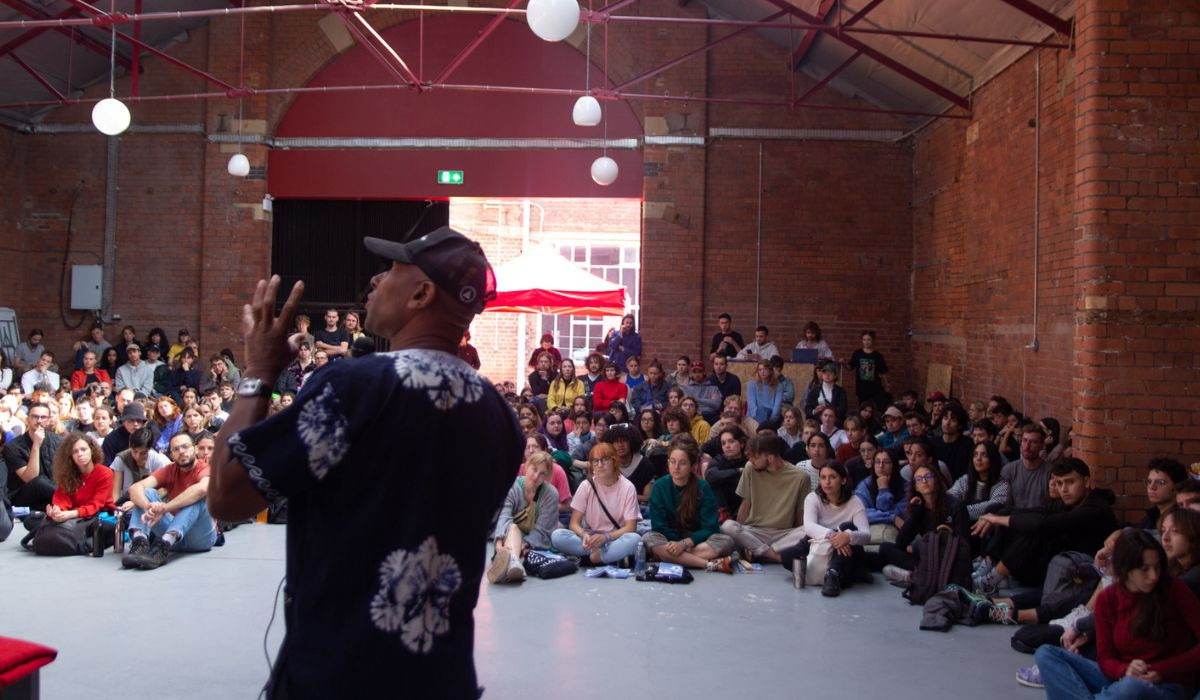Niko Brewster received College’s ‘Optimising Students’ Futures’ funding to attend architecture summer residency.
EASA Commons (European Architecture Students Assembly) is Europe’s longest running decentralised architectural education system, investigating the role of architecture and urbanism in communing practices.
Niko, undergraduate Architecture student at Lucy, tells us about his experience of the residency.
“In the month of August, I spent two weeks in Sheffield where we underwent a collective inquiry into what the idea of communing meant to architecture in this day and age. This involved eating, sleeping, and living with three hundred and ninety-nine other people in a formerly abandoned warehouse – as an entirely student run affair, and a generally low budget undertaking space and comfort were at a premium. However, I found that there was an abundance of original thought, architectural know-how, and professional knowledge on display to borrow and learn from.
For original thought I simply had to look to my workshop tutors, in our daily activities we were investigating and cataloguing Sheffield’s abandoned buildings, and the life that had begun to occupy them. This helped me to understand that abandoned buildings were not in fact that abandoned – they acted as a parcel of commonly shared land for graffiti writers, mosses and lichen, urban explorers, and various forms of plant and insect life. Exposure to the life cycles of buildings has piqued my interest in domicology, and this is now an area of study I could see myself exploring.
In terms of architectural know-how, I got a chance to speak to many of the other workshop coordinators over dinner. Here I had an opportunity to speak to people who were active practitioners in the field, doing good quality work, that could point me in the right direction. One particular conversation helped me discover a slew of new references that are likely to come in handy for writing my dissertation this coming year.
I found some professional knowledge in simply observing how such an event was run, observing the mechanisms by which 400 people were fed, showered, and taught on a tight budget and limited manpower taught me a lot about organisational structure and principles.
However, conversations with some of the organisers gave me the bulk of what I learned from this experience. One conversation in particular after dinner was extensive, and really helped me to map out how I should approach the next few years professionally. I also met many people with similar values across the European continent, who may one day be open to collaboration on all sorts of projects. All of this had led me to consider becoming an NC, a national contact that helps EASA make decisions on its future as an organisation. Rest assured, I will be back next year.
Generally I think that this experience benefitted me twofold; once through direct action in the form of the workshop, and then also indirectly through a form of osmosis. While it was to be expected that the workshop would impart value to a student such as myself, I was not expecting the extent to which I would learn from being and living with my peers. In hindsight it makes sense – in two weeks with people who are nuts enough about architecture to camp out in a warehouse for it, you are bound to find a wealth of fresh thinking and true insight.”
Header image: Tomáš Volejník - Introductory address by Rob Cotterell, chairman of SADACCA.




